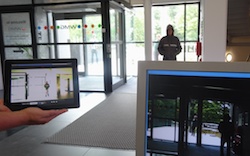
Researchers based out of Warwick University will return to IBC this year with a new and low-cost means of capturing High Dynamic Range (HDR) video.
HDR is the technique of capturing a far wider range of real world colours and lighting detail than is possible with existing camera technology. While a number of mobile devices, including the Apple iPhone, have an HDR video mode, the output is not considered a true HDR stream and so prevents detail in the footage from being examined further.
Moreover, to capture the full range of light within a scene can result in eyewateringly large data. A single uncompressed HDR frame requires 24MB, which results in 42GB for a minute of footage at 1080p at 30fps, compared to just 10GB for a minute of normal footage.
Attempts to produce practical HDR video content to date have used tone mapping, which allows more lighting levels in the scene to be captured, but it’s a one-way process with no way to resurrect the information. GoHDR says it has cracked the conundrum.
Pairing Canon DSLRs in a system developed at a cost of £10,000 and its patented realtime HDR video encoder plus an HDR viewer player software, it will show HDR displayed through any web browser, HDR monitor or mobile device.
“True HDR video has arrived,” declared Alan Chalmers, innovation director at goHDR. “We are showing, for the first time, a complete low-cost HDR video solution composed of off-the-shelf components. Our solution preserves all the data from capture to display. On the display, including mobile devices, the user can see and interrogate information across the full spectrum of light levels. Different windows can be set allowing detail in different lighting conditions to be interrogated simultaneously, making HDR video more powerful than the human eye.”
The researchers visited Florida last month to record a space rocket launch, footage of which they hope to show at IBC.
The photograph shows monitors displaying two different exposures of the same video simultaneously.
By Adrian Pennington






